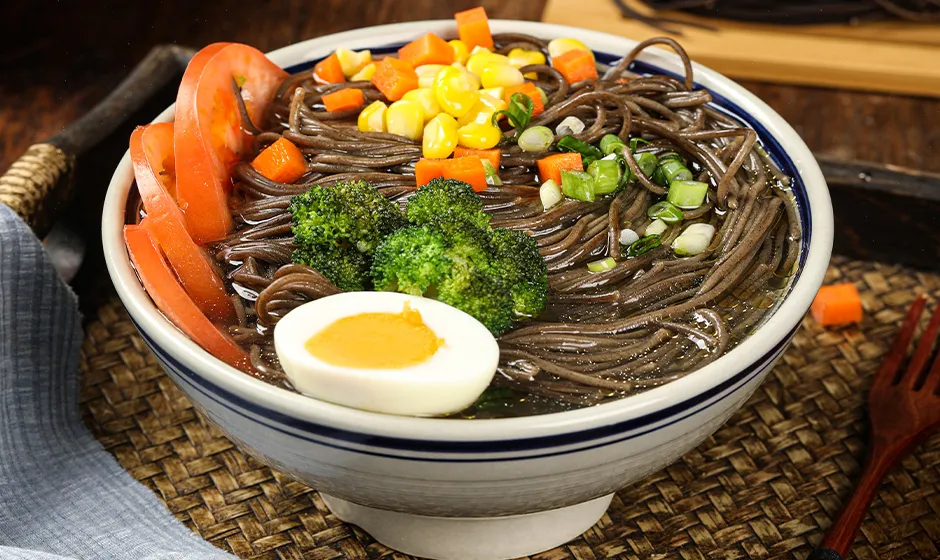100 soba
The Delicious World of 100% Soba A Journey Through Buckwheat Noodles
Soba, the traditional Japanese noodle, has gained immense popularity across the globe for its unique taste, health benefits, and versatility in a variety of dishes. When we talk about 100% soba, we refer to noodles made exclusively from buckwheat flour, which distinguishes them from mixed varieties that may include wheat flour. This article explores the fascinating world of 100% soba, delving into its history, nutritional benefits, culinary uses, and why it deserves a place in your pantry.
A Brief History of Soba
The origins of soba can be traced back to Japan, where it has been enjoyed for centuries. It is believed that buckwheat was introduced to the country from China around the 8th century. Initially, soba was a food for the lower classes due to its affordability and ease of cultivation in mountainous regions. However, over time, it became a staple food enjoyed by all social classes, celebrated for its hearty flavor and nutritional value. Today, soba holds a special place in Japanese culture, often served on special occasions and festivals.
What Makes 100% Soba Unique?
100% soba noodles are made entirely from buckwheat, a pseudo-cereal that is naturally gluten-free. This makes it an excellent option for those with gluten intolerance or celiac disease. The absence of wheat flour in 100% soba results in a distinctive taste—nutty and earthy—that sets it apart from other types of noodles. Another key characteristic is the noodle's texture, which can range from firm to slightly chewy, adding an appealing mouthfeel to dishes.
Nutritional Benefits
100 soba

One of the standout features of 100% soba is its impressive nutritional profile. Buckwheat is rich in essential nutrients, including protein, fiber, vitamins, and minerals. It is particularly notable for its high levels of rutin, a powerful antioxidant that promotes cardiovascular health. Additionally, buckwheat contains all nine essential amino acids, making it a complete protein source—a rarity in plant-based foods. The fiber content in soba aids digestion and helps maintain stable blood sugar levels, making it an ideal choice for those looking to incorporate healthier options into their diet.
Culinary Uses
The versatility of 100% soba is one of its most appealing aspects. It can be enjoyed in various ways, both hot and cold. Cold soba, typically served with a dipping sauce, is a refreshing summer dish often garnished with green onions and wasabi. On the other hand, soba noodles can also be enjoyed in soups, stir-fries, or salads. They pair beautifully with a wide array of ingredients, from vegetables and seafood to meats and tofu.
One popular dish is soba noodle soup, where the noodles are cooked in a flavorful broth, accompanied by ingredients like mushrooms, bok choy, and sliced green onions. Another favorite is zaru soba, where the cold soba is served on a bamboo mat with a soy-based dipping sauce, allowing the natural flavors of the buckwheat to shine.
Conclusion
In the diverse landscape of global cuisine, 100% soba stands out as a nutritious, delicious, and versatile food option. Its rich history, remarkable health benefits, and adaptability in the kitchen make it worthy of exploration. Whether you are a seasoned chef or a culinary novice, incorporating 100% soba into your meals is an easy way to enhance your diet and indulge in a taste of Japanese tradition.
As the world increasingly embraces healthy eating habits, 100% soba noodles offer a delightful alternative to traditional pasta and other carb-laden foods. So, the next time you’re looking to try something new in your cooking, consider reaching for 100% soba and experience the delightful explosion of flavors that this ancient noodle has to offer.
-
Is Whole Wheat Pasta Healthy?NewsMay.30,2025
-
Are Soba Noodles Good for Weight Loss?NewsMay.30,2025
-
Are Buckwheat Soba Noodles Healthy?NewsMay.30,2025
-
Are Buckwheat Soba Noodles Gluten Free?NewsMay.30,2025
-
Are Buckwheat Noodles Good for You?NewsMay.30,2025
-
A Healthy Way to Savor Soba and Spicy FlavorsNewsMay.30,2025
-
What Are Lanzhou Noodles?NewsMay.30,2025
Browse qua the following product new the we

















































































































